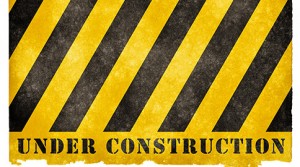I bet one of these situations is familiar to you:
- struggling to close an exploding sock drawer because it’s jammed packed full
- slamming shut your wardrobe to stop an avalanche of shoes from escaping
- repeatedly ignoring the message popping up in your email shouting that ‘Your inbox is full’
Yup, hands up guilty as charged. I’ve done this… actually all of these.
What do these problems have in common? They are visible, physical problems (especially exploding sock drawers). They impact negatively on your life; that jammed-shut drawer, all those emails clogging up your inbox.
These are things we know we need to sort out so they stop being a problem. But they’re often tedious tasks.
We have the same problems with websites…
 Exploding socks
Exploding socks
Websites can have the same too-much-stuff problem as our sock drawer. But the real problem is it’s often invisible to us.
With websites, the problem starts when lots of ‘stuff’ builds up over time. Old documents and images, defunct logos, old versions of pages etc.
You may think this stuff is harmless; it’s all behind the scenes. You don’t link to them or use them anymore…. right?
Nope.
Just because you have removed a hyperlink to an old document for example, doesn’t mean it’s gone. If that old version still exists on your site, it’s still indexed and found by search engines and people.
Do or do not, there is no try
Your website may seem to work perfectly fine – but behind the scenes the stuff cluttering up your website can really harm it’s performance, peoples user experience – and sometimes even your reputation.
And here’s why.
Imagine somebody wants to find out the latest information about our student accommodation. Using a search engine they type in ‘student accommodation Newcastle University’.
The results list all the pages and documents that have been indexed as containing this information on the University’s website. Alongside some page links, a PDF is listed – uh oh…it’s for 2013!*
How can people trust us if our information is out of date?
This is why deleting stuff is good.
Ideally you’d delete the old content each time you replace it with new content on your website. But if you haven’t done that (or you have inherited a website from a hoarder) or just don’t know where to begin, then don’t worry help is at hand.
 Minimalist mantra
Minimalist mantra
The minimalist method of cutting out clutter is an interesting approach to take. Take shoes for example.
Group all the similar shoes you have; trainers, sandals, boots etc. Decide which pairs of each type do you wear most often and want to keep, then remove the rest.
This is easily applied to your website; documents, images, logo’s, old versions of pages etc.
Decide which ones you need to keep. They are:
- the most recent versions
- being linked to in your content
Delete the rest.
Keep calm and stop the ROT
ROT stands for redundant, out-of-date or trivial. Large organisations (like us) that have a massive web presence find this a problem. By taking a good look at your site and deleting stuff you can stop the ROT.
Don’t treat your website like a file store. Keeping stuff ‘just in case’ on your website is:
- dangerous – it is still indexed by search engines and found by people
- lazy – just save it elsewhere
- harmful – our reputation is jeopardised by out of date content, and gives a negative experience for users
As part of Go Mobile we will audit each site in the programme, and identify ROT. When making our websites work well for devices with small screens, deleting old stuff we don’t need is vital.
If you want any advice about where/how to start, just get in touch.
There’s also a good article from Paul Boag about dealing with ROT that’s worth a read.
*Relax…this search works perfectly well in real life – no old documents being indexed here!
Image credits:
- escape! by Jessica Wilson licensed under CC BY-NC-ND 2.0
- delete by Mixy Lorenzo licensed under CC BY-NC-SA 2.0



